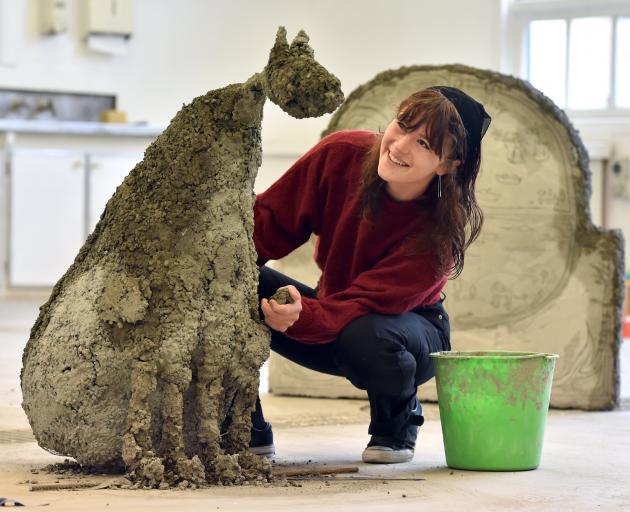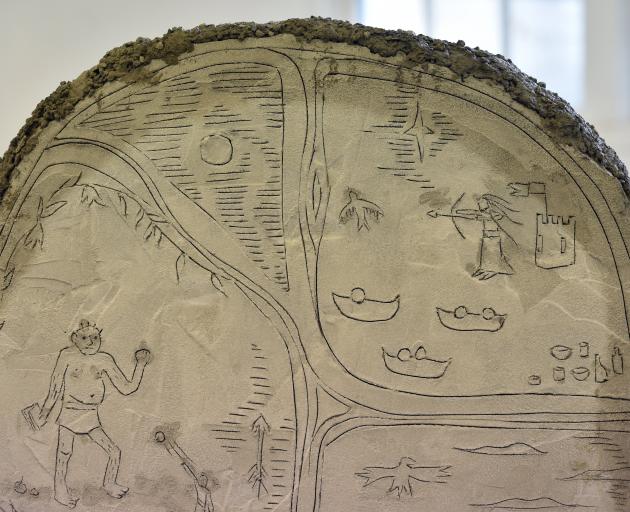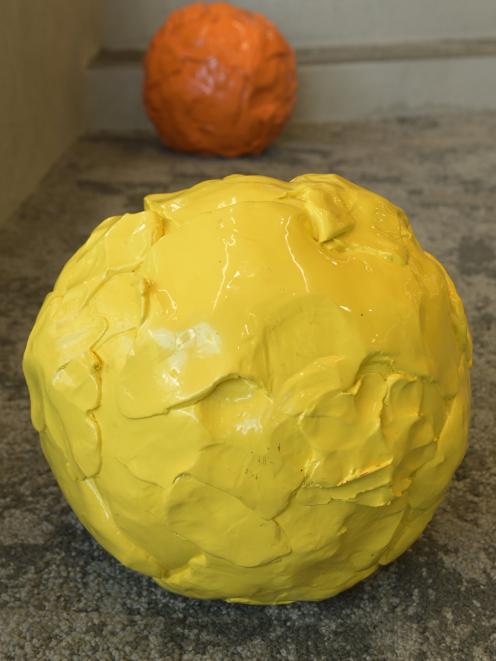
With the weight of being the first on her shoulders, Jenny Hjertquist is both excited and nervous about her upcoming exhibition.
Hjertquist, a Dunedin School of Art honours student, has been selected to create the first sculpture exhibition of the Otago Polytechnic's "Four Plinths" project, which will feature revolving exhibits of student and staff sculpture projects in the courtyard at the rear of its Hub.
"It's really exciting my work is being noticed. It's a great opportunity."
The former Logan Park High School pupil has found her home in sculpture.
"Ever since I was a kid I did little craft projects. I thought I'd come to art school to paint but sculpture took my fancy."

For this project, entitled "Four Rivers", she has again used concrete, creating inscribed concrete tablets to sit on two of the plinths and two dogs.
"These will have small sculptural engraved landscapes and scenes, ocean waves, mountains, human interaction, rituals in everyday life.
"The other two plinths will have two mythological-inspired dogs ... which will act as protectors or watchers. They will sit diagonally facing the tablets, kind of like they are watching TV almost."
The concept behind the work is four rivers running to the four corners of the world.
"It is representative of the bringing together of different aspects of life and people.
"The work nods at the New Zealand landscape, the rolling hills, rough Pacific oceans, and the elegant mountains surrounding our cities. It applies to Otago Polytechnic as a space of creation and a space to form new communities."


They depict the estimated 8million tons of rubbish entering the ocean every year. The plastic used in the work weighs 200kg, which is the amount of plastic entering the ocean every second.
The work is from Clearwater's installation Where Is Away? (2018), which explored how art can present and interpret complex scientific data, and form this into aesthetic, representational works that depict harsh environmental realities.
Hoffman, the 2017 scholarship winner, has displayed his video projection Environments in Modern Region representing three separate locations around Otago (Ross Creek, St Clair Esplanade and Macrae's Mine) that have been changed by people in some way.
He says the video takes two approaches to looking at the sites: physical interaction with the sites and digital mapping/green screen methods.
The exhibition also includes sculptures by Dunedin School of Art senior lecturer Scott Eady who, along with Rebecca Hamid, has been instrumental in establishing the Wallace Warburton Scholarship.

To see
Now See Here!, Otago Polytechnic, February 13, 5.45pm.
Environments in Modern Region, Otago Polytechnic room H105, off The Hub, showing until March 21.












